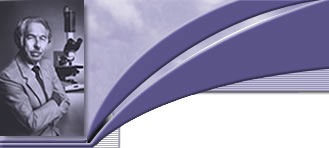|
 “Non-Surgical
Antimicrobial Periodontal
Therapy” — “Non-Surgical
Antimicrobial Periodontal
Therapy” —
A video lecture
by Dr. Paul H.
Keyes presenting
his 30-year perspective
on non-surgical
periodontal therapy
In
2006, Mercy Medical
Center in Baltimore
hosted a once
in a lifetime course
that will be
remembered as a
landmark in the
annals of continuing
dental education.
World famous
researchers and
educators who practically
invented Anti-Infective
Periodontal Therapy
all gathered
together on one
stage to present
a joint course
reviewing 30 years
of research and
the current state
of the art. Dr.
Paul H. Keyes,
DDS, MS, Clinical
Professor of
Periodontology,
Temple Univ.
School of Dentistry,
was one of these
lecturers. » Read
more
[top]
“ Taking
the Bite Out
of Gum Disease”
— An Interview
with Thomas Rams,
D.D.S., M.H.S. Taking
the Bite Out
of Gum Disease”
— An Interview
with Thomas Rams,
D.D.S., M.H.S.
Two
decades ago, the
Post first introduced
the sage advice
of Dr. Paul Keyes,
a leading researcher
at the NIH and
pioneer of nonsurgical
periodontal (gum)
disease treatment
to save one’s
teeth. While then
highly controversial,
the Keyes Technique
stressed that the
best defense against
periodontal disease
is a good home
oral hygiene program
that included routine
cleaning with baking
soda, salt, and
peroxide. Flash-forward
to the present,
and his preventive
insights
are timelier than
ever. (Includes
comprehensive home-care
techniques!) » Read
more
[top]
 A
Response
to AARP Article — “Nothing
to Smile
About” A
Response
to AARP Article — “Nothing
to Smile
About”
In
the September
2006 issue of
the AARP
Bulletin,
Carole Fleck describes
the problems many
older persons experience
in finding affordable
dental care. She
attributes their
dental health problems
either to lack
of insurance or
the inability to
pay for services.
She does not mention
that dental health
depends almost
entirely on the
self-care one uses
to control oral
infections, not
on the fillings,
crowns, bridges,
root canals, etc.
that are used to
treat diseased
teeth. » Read
more
[top]
 What
Are You Brushing
With? What
Are You Brushing
With?
The primary
dental health
benefits attained
by using a dentifrice
are derived from
its potential
to disorganize,
disperse, detoxify,
and thereby decontaminate
the pathogenic
bacterial biofilms
that colonize
tooth-surfaces
and gingival
crevices. The
mechanical action
of brushing,
flossing, tooth-picking,
mouth-rinsing,
and conventional
irrigation can
reduce bacterial
biofilms somewhat,
but these methods
have no bactericidal
action per se.
This article
describes several
antibacterial
dentifrices,
including baking
soda, table salt,
glycerin, vinegar,
cranberry juice,
Neutrogena soap,
and Clorox. It
also explains
numerous ways
to use them alone
or in combination. » Read
more
[top]
 Treatment
of Juvenile Periodontitis
With Microbiologically
Modulated Periodontal
Therapy (Keyes
Technique) Treatment
of Juvenile Periodontitis
With Microbiologically
Modulated Periodontal
Therapy (Keyes
Technique)
…These
findings demonstrate
that juvenile periodontitis
patients can be
treated successfully
and maintained
on a long-term
basis without periodontal
surgery when appropriate
antimicrobial therapy
is directed at
the subgingival
periodontopathic
microbiota. » Read
more
[top]
 Demonstration
of the etiologic
role of streptococci
in experimental
caries in the
hamster Demonstration
of the etiologic
role of streptococci
in experimental
caries in the
hamster
Dental
caries was induced
in ‘caries-inactive’ albino
hamsters by oral
inoculation of
pure cultures of
a streptococcus
isolated from a
caries lesion of
a caries active
hamster. A streptomycin-resistant
mutant of this
organism was used
to demonstrate
its presence in
caries lesions
and to trace the
transmission of
the labeled’ organisms
between animals.
[Citation of a
1960 paper by Fitzgerald
R J & Keyes
P H..] » Read
more
[top]

The
Microbiology
of Primary Dental
Caries
(a paper
dedicated to
Paul H. Keyes
and Robert J.
Fitzgerald)
This review was
conducted to evaluate
the implication
of certain microorganisms
in the causation
of human tooth
decay. It examines
the evidence concerning
bacterial species
identified in both
early and current
literature to be
involved in tooth
decay, whether
originally from
wild animal, experimental
animal and/or human
data. It also examines
the source of this
putative infection
of humans. Attention
is focused on the
mutans streptococci,
the sanguinis streptococci,
other streptococci,
the enterococci,
the lactobacilli,
and certain actinomycetes,
all of which are
resident in the
human mouth. » Read
more
[top] |

